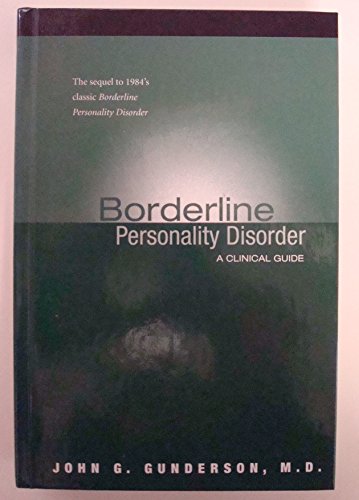Borderline Personality Disorder: A Clinical Guide
Regular price
$103.68 USD
Regular price
Sale price
$103.68 USD
Unit price
per
Shipping calculated at checkout.
Couldn't load pickup availability
Borderline personality disorder is easily the most widely and commonly used diagnosis for personality disorders in clinical practice today--affecting about 2%--3% of the general population 25% of the inpatient population and 15% of the outpatient population. This sequel to Gundersons 1984 Borderline Personality Disorder reflects the explosion of information expertise and specialization in borderline personality disorder covering all recognized treatments for the clinical care of borderline patients in todays managed care environment. Integrating scientific advances with clinical lore it offers a sophisticated--and uniquely comprehensive--look at treatment literature clinical perspectives and modalities. Beginning with the diagnosis itself (with special attention to the borderline patients specialty self-destructiveness) this remarkable volume presents the following topics: The authors empirically and clinically anchored theory on the sequencing of goals (i.e. the targets for intervention) processes of change and modalities best suited for a patients changing needs. This theory superimposes a logic on treatment planning and anticipates the sequence of subsequent chapters on specific treatment modalities. The importance of the primary clinician easily overlooked because borderline patients receive care in multiple settings further complicating the already difficult process of obtaining the critical treatment authorizations mandated by managed care. Treatment split among caregivers made necessary by todays managed care environment is here elevated to a virtue because multiple caregivers add breadth to treatment goals and help prevent flight from treatment by these patients. The different goals directions structure and staffing of the four levels of care: hospitalization residential/partial hospital care intensive outpatient programs and outpatient programs. Two seemingly conflicting aspects of psychopharmacology: 1) a guide to selecting medication (the single most widely and uniformly used treatment) and 2) the real-life complexities of prescribing medications and evaluating their effectiveness Cognitive-behavioral therapies (the major therapeutic advance of the 1990s) especially dialectical behavior therapy; family involvement; and interpersonal group treatment. An in-depth exploration of psychoanalytic psychotherapy in which the author argues that this modality (until recently the treatment of choice for borderline patients) should be used selectively because of the motivation and aptitude required by both patients and therapists. Enhanced by both case reports and sidebars that detail newsworthy timely--and controversial--topics found nowhere else in the literature this captivating text concludes with a refreshingly optimistic look at the future of effectively treating borderline patients. It will prove an invaluable reference for clinicians patients families health care administrators and instructors in psychotherapy psychopathology and integrated treatment.
Product details
- Publisher
- My Store
- Publication date
- January 1, 2001
- ISBN-10
- 1585620165
- ISBN-13
- 9781585620166
- Item Weight
- 25.6 oz
- Dimensions
- 9.02 × 0.98 × 6.26 in


